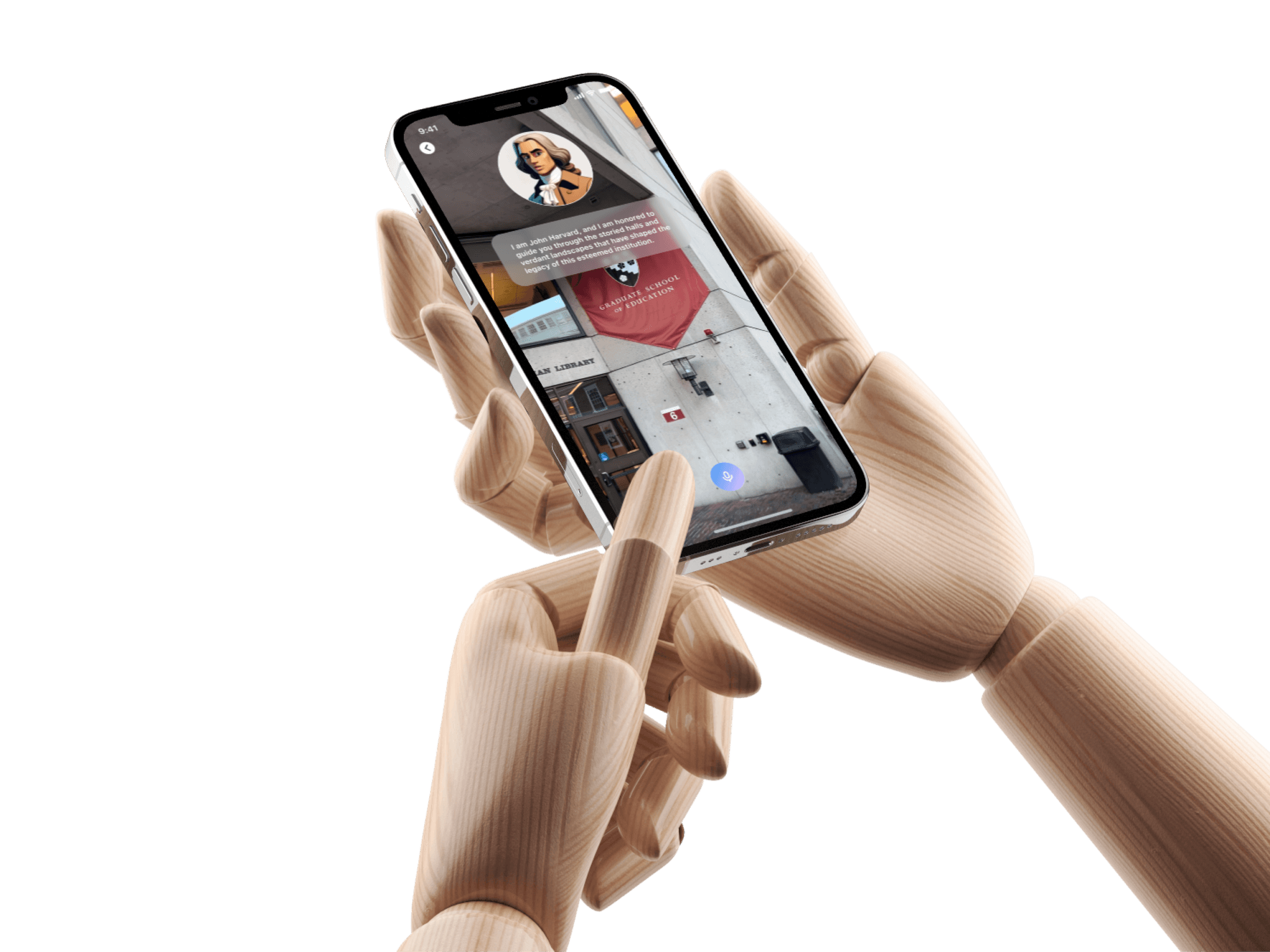ExploAR is a mobile app that blends real-world exploration with AR and AI to transform your travels into immersive learning adventures.
/ Project Type
Team Project
Harvard University
/ Tools
Figma, Unity
/ My Role
UXUI Designer
Interaction Designer
/ Timeline
Mar 2024 - May 2024
Location-Based Discovery
ExploAR allows users to discover and explore specific landmarks like Harvard Square. Users can also invite friends to join them on a virtual tour.
A "Local" Tour Guide, Such As John Harvard.
The AR tour guide activates when you scan a specific symbol with your smartphone. It responds to your voice commands, answering questions and providing personalized information about landmarks and sites.
Scavenger Hunt
This is a fun, interactive game where you explore Harvard Square using clues to uncover hidden stories and facts. Each clue you solve leads you to the next layers of fiction about Harvard's history.
Problem
How many times have you read these when visiting a site?
What's the Problem?
I interviewed 6 participants who have travelled recently.
There is a lack of solutions supporting the creation of meaningful shared educational experiences.
Solution
Diving into the needs
Ideate how users will interact with AR
Research Supported Pedagogy
Universal Design for Learning
Multiple means of representation and engagement including text, voice, image, trivia game,etc.
Self-paced tour with AI chatbot acting as a personal tutor.
Collaborative Learning
Learning with and from each other. Tapping into the social emotional aspect of learning.
Active Processing
Learners are actively constructing their own knowledge by working through the Trivia Challenge, rather than being a passive recipient.
3 iterations were made after user testing and research.
Tour Guide now has voice over
Voice responses make the app more accessible to users who may have difficulty reading text on a screen.
Voice allows users to listen to information while looking around and exploring the site.
History visualization
Users can more deeply appreciate the significance of the sites they are visiting, making abstract historical facts more tangible and relatable.
Scavenger Hunt now has clue solving.
It encourages users to think critically and interact more deeply with the location, rather than just collecting items.
This approach can foster teamwork and communication among groups, making the experience more social and enjoyable
Developing AR and AI
Scan to unlock the tour guide
With AI implementation, you can talk to John Harvard
What I've Learned
Cross-Functional Collaboration
With AR Developers: We work together to ensure that AR features are both technologically sophisticated and user-friendly, enhancing product functionality.
With Learning Designers: We focus on optimizing user flow and information architecture, crucial for supporting educational goals and creating holistic experiences.
Challenges:
Alignment Issues: Differences in familiarity with UX principles among team members sometimes lead to overloaded interfaces, necessitating reworks in design and architecture.
Resource Intensive: High demands for quality AR content require significant coordination and time, emphasizing the need for effective communication and project management.
Lessons Learned: The experience has reinforced the importance of continuous communication and adapting management strategies to team needs, skills that are essential for future collaborative projects.
Emerging Technologies
AR for Immersive Learning: AR significantly enhances the educational experience by integrating digital information into the physical world, thus allowing for a holistic visualization of historical and conceptual data.
AI for Personalized Learning: AI provides tailored educational experiences simulates the nuanced guidance of a human instructor, thus addressing individual learning preferences and needs.
Impact and Future Potential:
Bridging Learning Modalities: AR and AI are pivotal in merging traditional educational approaches with modern technological capabilities, thus enhancing accessibility and engagement.
Ongoing Relevance: The continuous advancement of these technologies is vital for the progressive development of educational tools, indicating a sustained role in transforming how learners engage with and absorb educational material.
Next Steps
Feature Enhancement and Scaling
Develop additional features based on user demands and technological advancements. For example, integrating AI to provide more comprehensive analytics on user learning patterns.
Scale the app to cover more geographic locations or educational themes, broadening the target audience and use cases.
Sustainability and Monetization
Develop a sustainable monetization model that could include subscription services, in-app purchases, or premium features for enhanced experiences.
Ensure the business model supports ongoing development, maintenance, and customer support.
Get in touch








